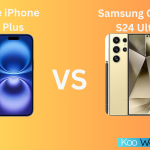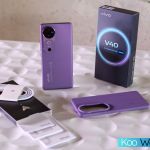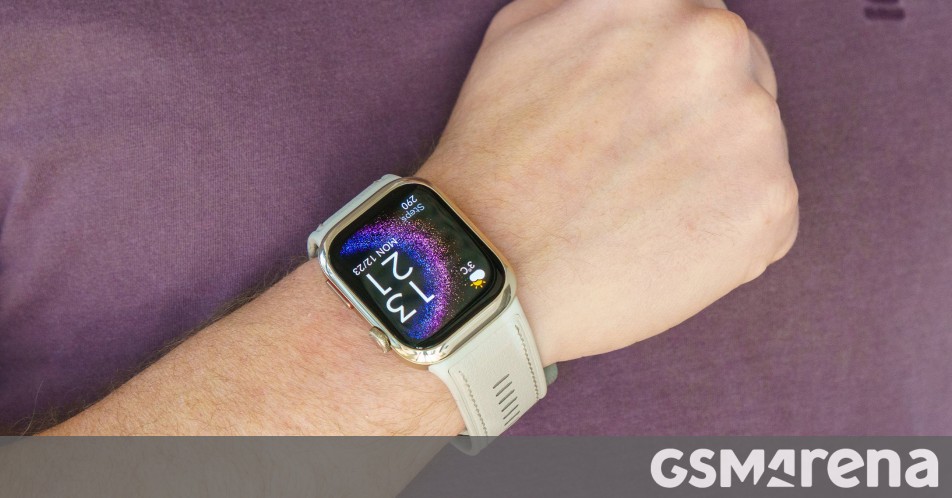The Huawei Watch D2 is the company’s second watch to come with blood pressure monitoring. Imagine a smartwatch that not only tracks your steps and heart rate but also brings advanced blood pressure monitoring right to your wrist with the ease of a built-in inflatable cuff.
Like all other Huawei smartwatches, the Watch D2 works with Android phones and iPhones. It has all the modern features you may expect – heart rate and SpO₂ tracking, sleep tracking, skin temperature, ECG, sleep breathing and arterial stiffness assessment, as well as tracking various types of exercise on demand. It will also help you stay on top of your phone’s app notifications, and you can even take calls on it while it’s connected to your phone via Bluetooth.
Hardly any of this is groundbreaking functionality, so it’s no surprise that the Watch D2 does not differ much from the other Huawei smartwatches we’ve reviewed recently, like the Watch GT 5 or the Watch GT 5 Pro. So, in this review, we won’t be getting into details about every feature that has been covered before. Instead, we’ll focus on battery life testing and checking how accurate blood pressure tracking is.
Table of Contents:
Design and build quality
The watch has a familiar design and layout (to the point of looking generic), but it’s undoubtedly a looker. The white composite leather strap and the subtly golden body on our review unit look exceptionally stylish.
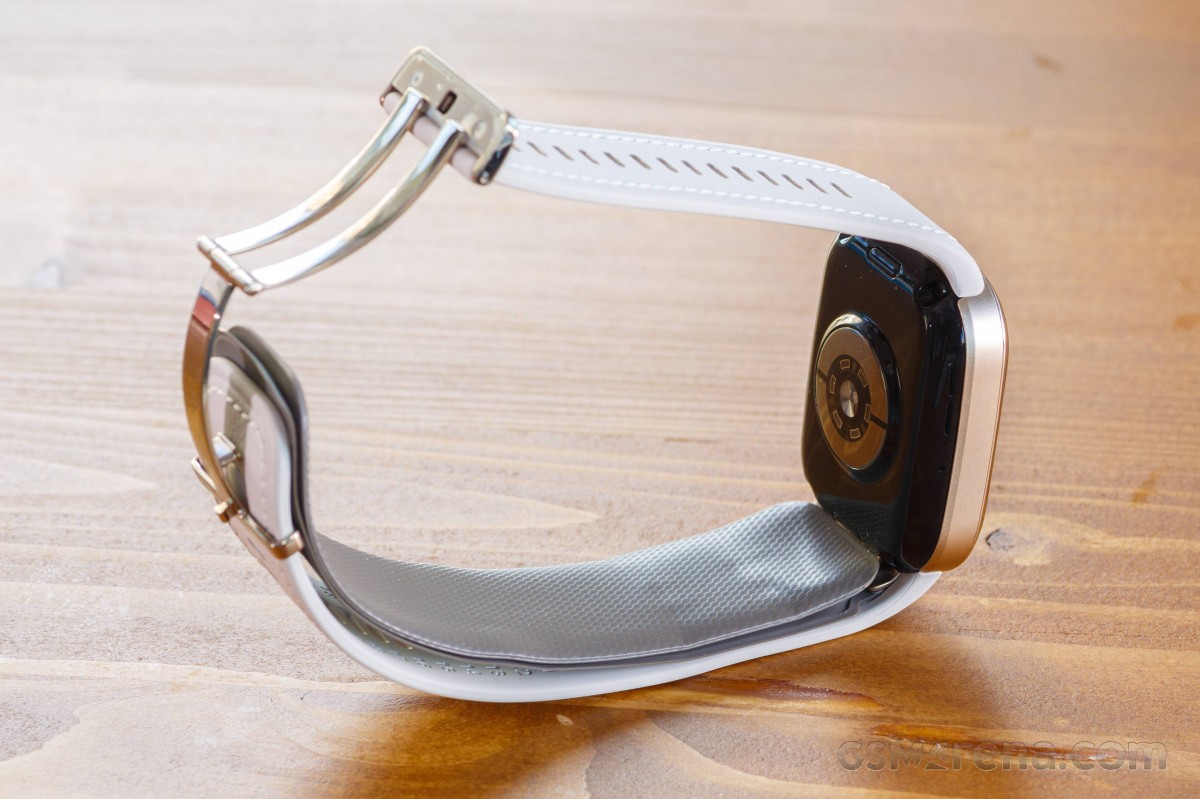
In the box, you get a magnetic charging puck with a built-in USB-A cable (no charger) and straps in two sizes.
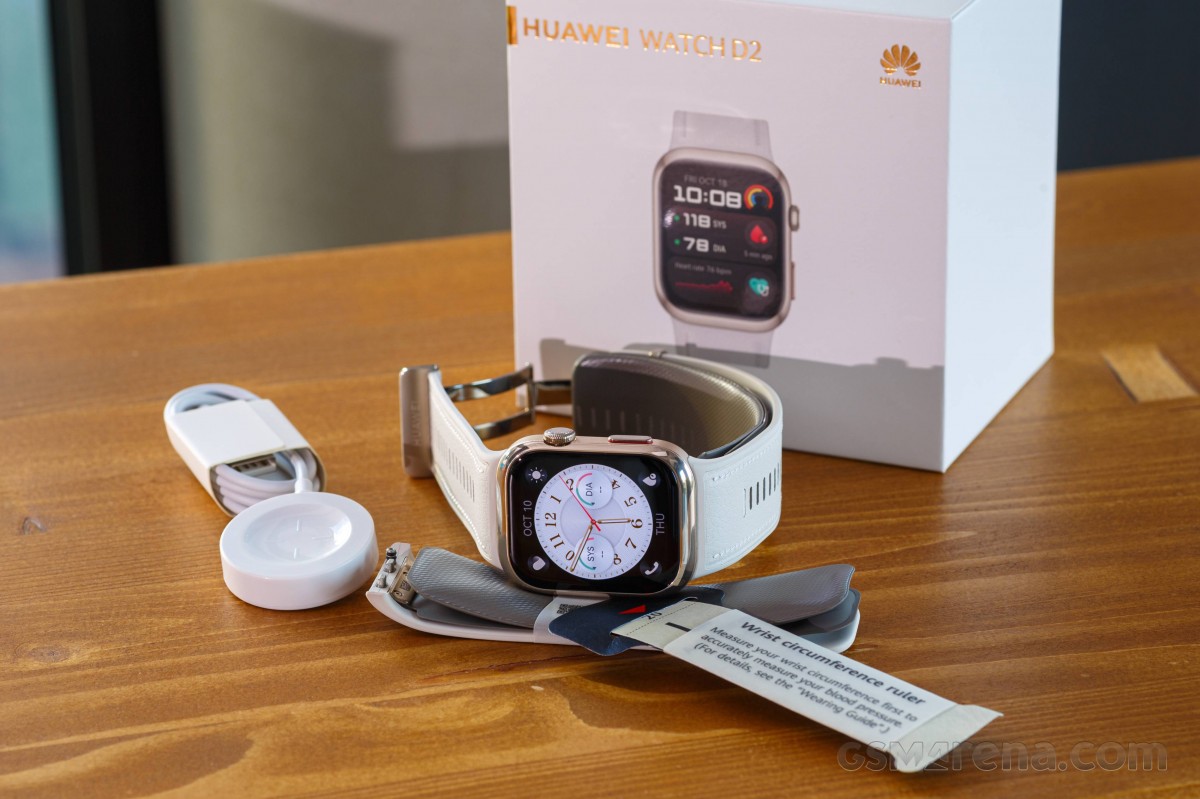
The strap itself feels incredibly comfortable to wear and easy to adjust in length on the go, should you need that.
The watch is also very light, and wearing it 24 hours a day felt seamless and comfortable.
The body is made of aluminum, and unknowingly, we scuffed the shiny bezel and the screen glass in everyday activities. Hence, they seem less durable than Huawei’s Pro series watches.
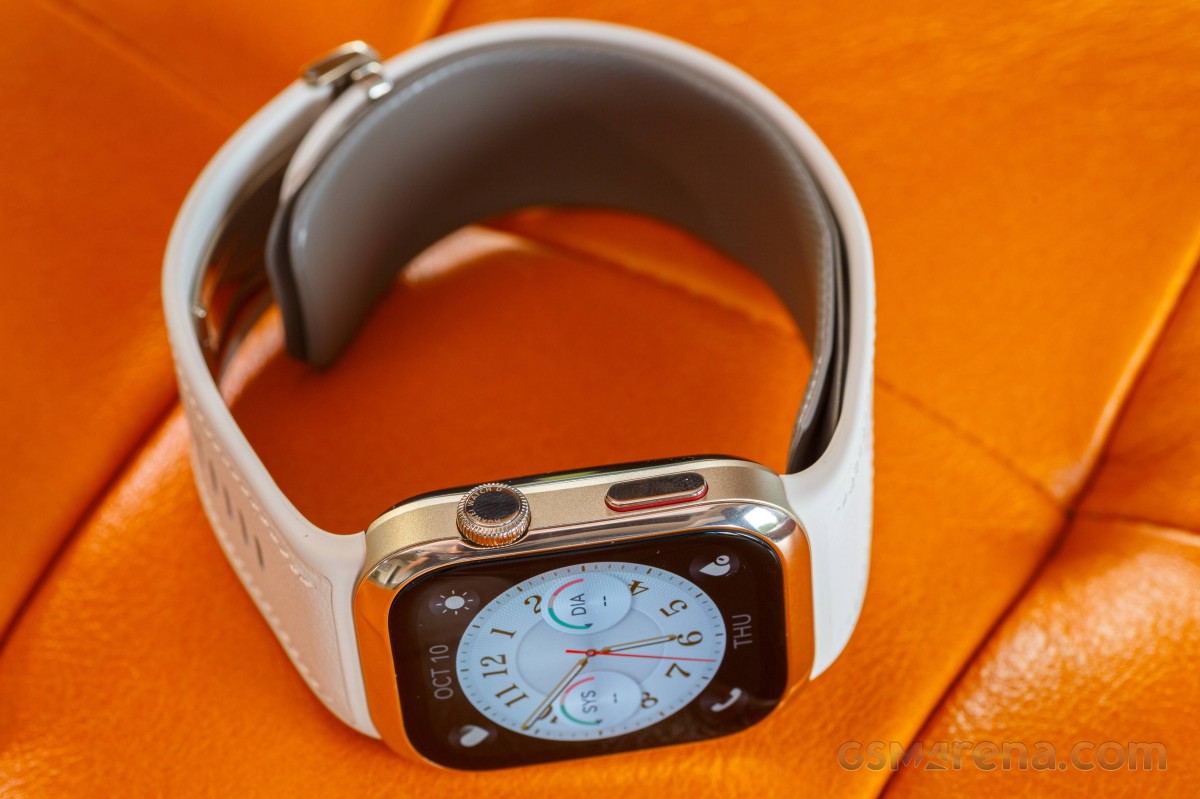
The watch body is IP68-rated, but Huawei advises against having it on your wrist while taking a hot shower, swimming, or diving.
The watch has a 1.82-inch OLED screen and a pixel density of 347ppi. Legibility is excellent in direct sunlight (possibly due to the promised 1500-nit peak brightness), and automatic brightness control works great.
The body measures 48 x 38mm and is slightly thicker than your usual smartwatch in this format. After all, it has a miniature air pump inside to inflate the cuff, which is incorporated into the wrist strap.
Removing the wrist straps for cleaning is easy and requires no tools. As you might imagine, the straps are not standard, so you can’t use a third-party one.
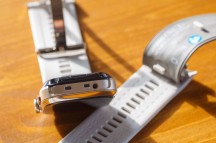
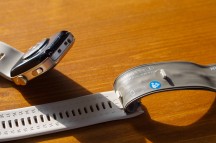
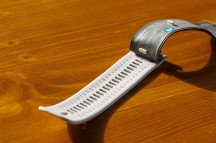
Removing the strap is easy and doesn’t require any tools
Software
The watch is based on HarmonyOS 5.0, Huawei’s latest wearable OS. From what we could tell, there is no feature missing compared to the company’s other watches.
With this OS edition, you get more frequent prompts about reaching your daily activity goals than with HarmonyOS 4.0 watches. You also get access to sleep breathing assessment at night, and you now have first-party apps like a Calculator or Barometer.
Like before, you can download a few third-party apps as well, but their usefulness will depend on your use cases. They usually require a host app installed on your phone; some would not work with an iPhone.
HarmonyOS 5 also comes with an on-screen QWERTY keyboard if you need to type a reply in a pinch. You also get the option to take a screenshot of the watch screen.
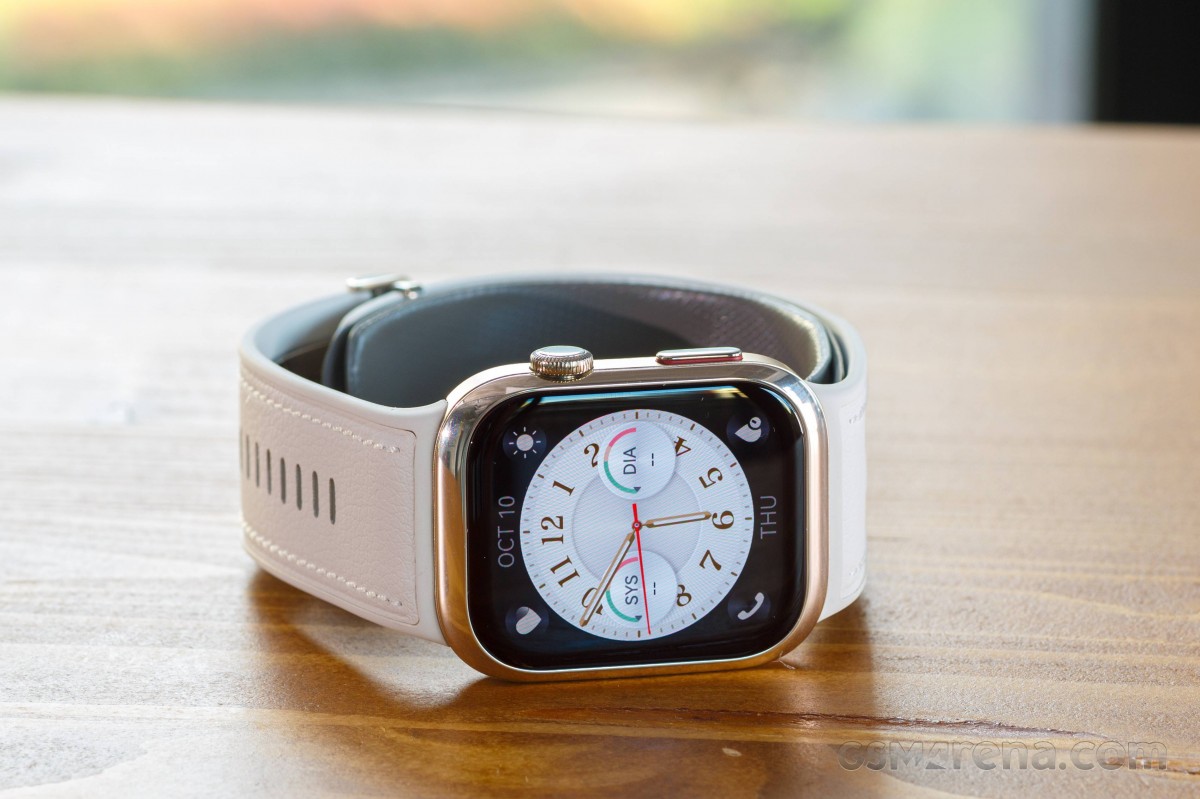
HarmonyOS is well optimized in fluidity and battery life, but we feel it still has a way to go regarding features. It has its limitations. You can’t rely on auto exercise detection, meaning you must start the tracking mode manually before you begin any sports activity, or the watch will not be bothered to track or record it. The automatic prompt every morning to measure your blood pressure is not very smart, coming up according to schedule every day, even if you’ve just finished measuring before that. Some features, such as Wallet or Mental health assessment, are regionally limited.
On the positive side, getting a GPS lock for outdoor activity tracking is very fast. The software is very fluid, and notifications work very well (even though the icons don’t match the icons of the real app).
You control the interface by rotating and pressing the crown or selecting apps and icons directly on the screen.
Battery life
There is a 524 mAh battery inside the Huawei Watch D2, and battery life was nothing short of stellar in a month or two we used it daily.
With Always-On Display (AOD), you get 6 days’ worth of operation on a single charge as the watch loses about 15% charge per 24h. Adding 5-6 blood pressure measurements per day did not take any extra toll on the battery life.
The Watch D2 really shined with AOD off, as, in this setup, it easily lasted 10 days on a single charge, losing 10% of charge per day.
We confirmed both battery life measurements across several charging cycles, and for all of them, we have all onboard health and step-tracking features but no exercise-tracking sessions.
Charging speed
The watch is rated at max 18W of charging, and we tested the charging speed by pairing the bundled magnetic charging puck with a 40W Huawei charger, which we had lying around.
A full charge took 98min, which is a lot. The watch’s charge level showed 37% at the 30-minute mark, 67% at the 60-minute mark, and 94% at the 90-minute mark.
Blood pressure measurement
Smartwatch manufacturers have had blood pressure measurements in their sights for a while now, and some are already offering the feature with varying degrees of user-friendliness.
Measuring on other smartwatches requires regular calibration with a proper blood pressure monitor and, in our experience, rarely works very seamlessly, often requiring retesting and retrying, which doesn’t allow for frequent use of the feature.
Compared to those watches, the inflatable cuff system used in the Watch D2 and its predecessor – the Watch D – provides next-level usability and ease of use. However, blood pressure measurements here are not without their caveats – the biggest being accuracy consistency. Let’s explain.
This caveat is not specific to the Huawei Watch D2 by any means. Even with regular blood pressure monitors you’d get from the pharmacy, the wrist cuff ones are inherently less consistently accurate than their arm cuff counterparts.
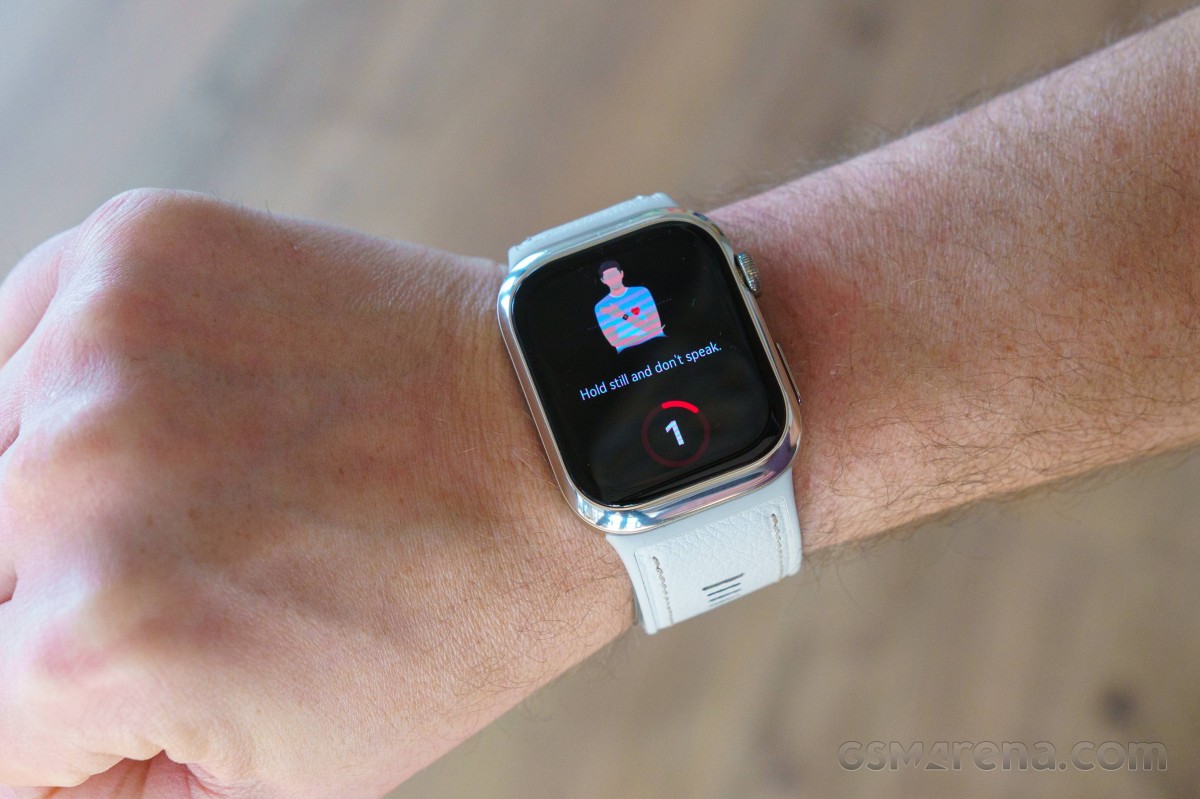
In our experience, even in the best-case scenarios, with a wrist cuff monitor, you always have to take three readings and average them out to get a reading that can be considered accurate. These readings can still be +/- 5 points off compared to a good arm cuff monitor, which is quite accurate. The best-case scenario we are referring to requires understanding and applying good form and consistent conditions to get consistent measurements.
Through trial and error, we discovered that the pose that Huawei suggests you assume for blood pressure measurement should be considered an absolute requirement and not a mere recommendation if you want to get anything close to accurate results.
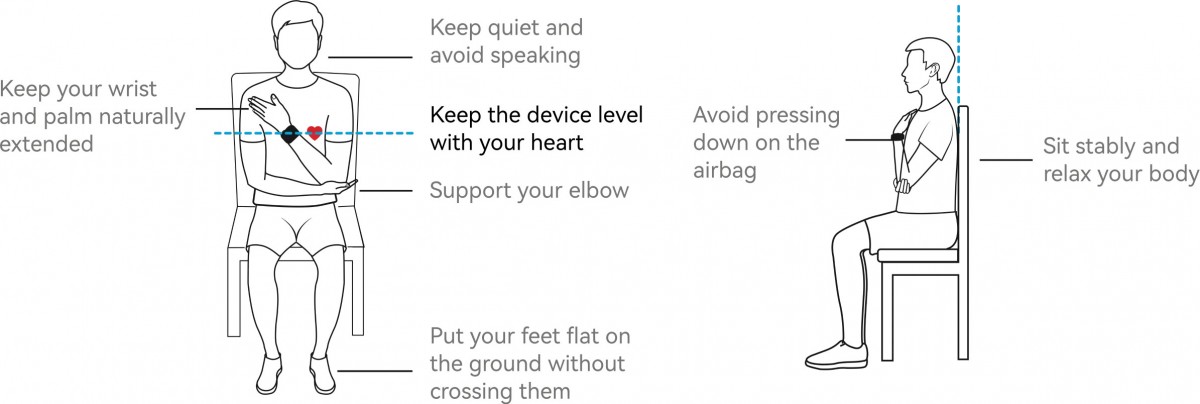
The correct form during measurement is paramount for the accuracy consistency
For this review, we used 3 dedicated blood pressure monitors to gauge how accurate the Watch D2 really is. We had a Panasonic wrist cuff monitor and two Omron arm cuff monitors – a modern Bluetooth-connected one that’s built into the cuff itself as well as a regular two-part monitor, which uses a cuff just like the one that can be found in your doctor’s office. And the results were quite intriguing.
The regular two-part electronic blood pressure monitor was the most accurate of the bunch, producing reliable and consistent results time after time, regardless of whether you were measuring blood pressure while sitting or lying down (we acknowledge that the two poses produce different results and we never compared the two directly).
The Bluetooth-enabled monitor built into the cuff was a close second in terms of consistency, with slight variations from measurement to measurement, which required three measurements to be taken each time to average the result. Still, the averaged results you’d get with this monitor were quite reliable and close to the ones with the first monitor (oftentimes identical and within 2-3 points of difference at worst). Measuring BP both when sitting and lying down was fine.
Finally, the two wrist cuff monitors (among which the Watch D2) were the least consistently accurate. We discovered that using any of these two necessitated 3 consecutive measurements every time, but even that was not enough. Both monitors could produce accurate measurements, but this relied heavily on using the proper position during measurements.
When the proper form was adhered to, the average results from the wrist monitors were also spot on, usually deviating only up to +/-3 points from our reference BP monitor.
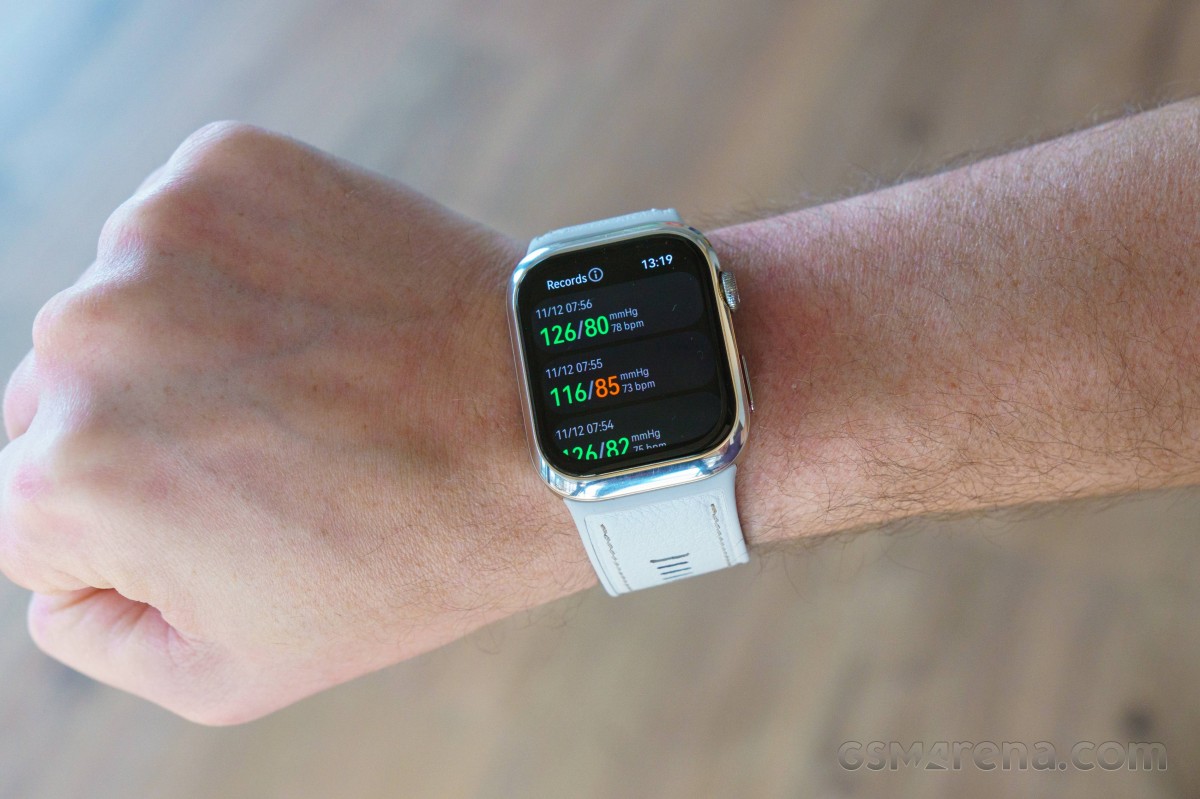
However, this wasn’t always the case. Sometimes, even with our best efforts to maintain consistent measurement parameters and form, there were still occasions where we got as much as +/- 7-8 points off.
That accuracy is still quite reasonable for a blood pressure monitor that can always be on your wrist (instead of your drawer), and measuring your blood pressure regularly and often can easily help clean up these outliers over longer periods of data recording.
However, if you plan on using wrist cuff monitors to only occasionally check your blood pressure, you may be disappointed by the consistency of the measurement accuracy.
To add to that limitation, measuring blood pressure lying down with any of the two wrist cuff monitors produced unreliable results. They are just not good for that.
Huawei has also built into the Watch D2 the option to perform 24-hour Ambulatory Blood Pressure Monitoring on request by the user. You pick a day and start the program, and the watch can either perform the measurements automatically or nudge you to start them manually when it’s time.
However, as we already explained, wrist cuff monitors like the one in the watch have an inherent lack of accuracy consistency if you are not mindful of using the correct form and posture. Additionally, they are inaccurate when you lie down, making them ill-suited for 24-hour monitoring sessions, and we wouldn’t trust the results.
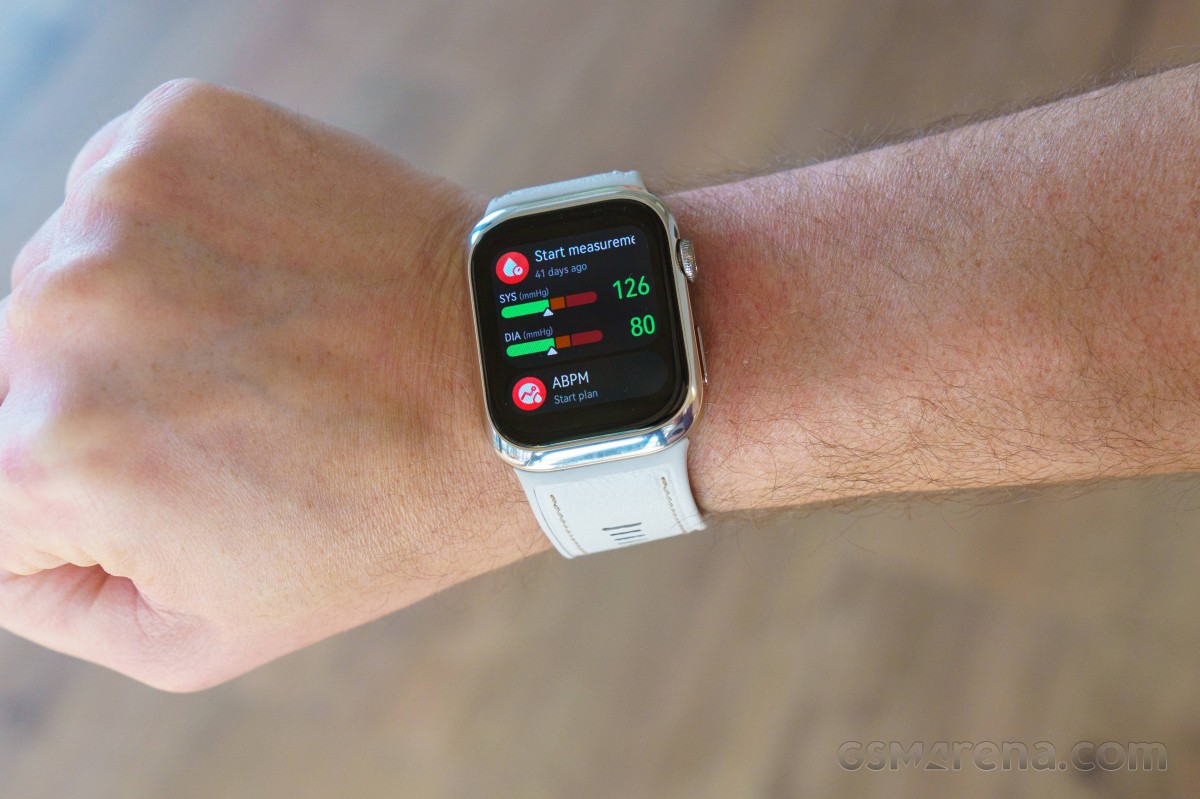
That said, we were happy with the overall accuracy of the blood pressure measurements provided by the Watch D2. As long as you perform at least three consecutive measurements and average them every time, and you always ensure consistent measuring conditions and proper form, it should serve quite well for someone who wants to keep track of their blood pressure regularly.
Verdict
The Watch D2 costs £350/€400, more than even the current flagship Huawei Watch GT 5 Pro. The built-in inflatable cuff for blood pressure monitoring makes this a unique proposition. Okay, it’s not entirely unique, as Huawei also has the previous Huawei Watch D, which comes with similar tech.
Compared to the Watch D, the new model has a more upmarket design, more compact body, longer battery life and much newer HarmonyOS. There is also the improved motion tracking, the barometer and the ECG functionality. We didn’t have the two side by side to compare the accuracy or consistency of the measurements, so we can’t comment on that. The Watch D will also be harder to find in stores, as it’s already being phased out.
The Huawei Watch D2 is hard to beat for a blood pressure monitoring smartwatch. The engineering that has gone into creating it is commendable. However, this convenience comes at a cost.
If you are after a smartwatch with long battery life, you can get 90% of features with the Huawei Watch Fit 3 for less than half the money, so you are essentially paying upwards of €200 for a blood pressure monitor with finicky accuracy and consistency (also true for ANY wrist cuff blood monitor). This much money can get you a high-end compact, connected one-piece arm cuff monitor that will help you stay on top of your blood pressure faster, more consistently and with less attention to proper form.
However, in the end, the best blood pressure monitor is the one you actually use daily. So, if the convenience of having the Watch D2 on your wrist gets you to check your blood pressure regularly, then the price is definitely worth it.
Pros
- Upmarket look and feel.
- Display is sharp and performs great in any environment.
- Inflatable strap is incorporated seamlessly and inconspicuously.
- Intuitive user interface with fluid performance.
- Great battery life.
- Fast and solid GPS lock during exercise tracking.
- Accurate blood pressure measurement (with a few caveats).
Cons
- The metal and glass scuff more easily than other Huawei watches.
- Not suitable for swimming or showering despite IP68 rating.
- HarmonyOS 5 still has some odd limitations, and apps are limited.
- Accurate blood pressure measurement requires proper form and conditions (valid for any wrist cuff monitor).
- Individual blood pressure measurements are often off (valid for any wrist cuff monitor), and the watch does not automatically average consecutive measurements.
